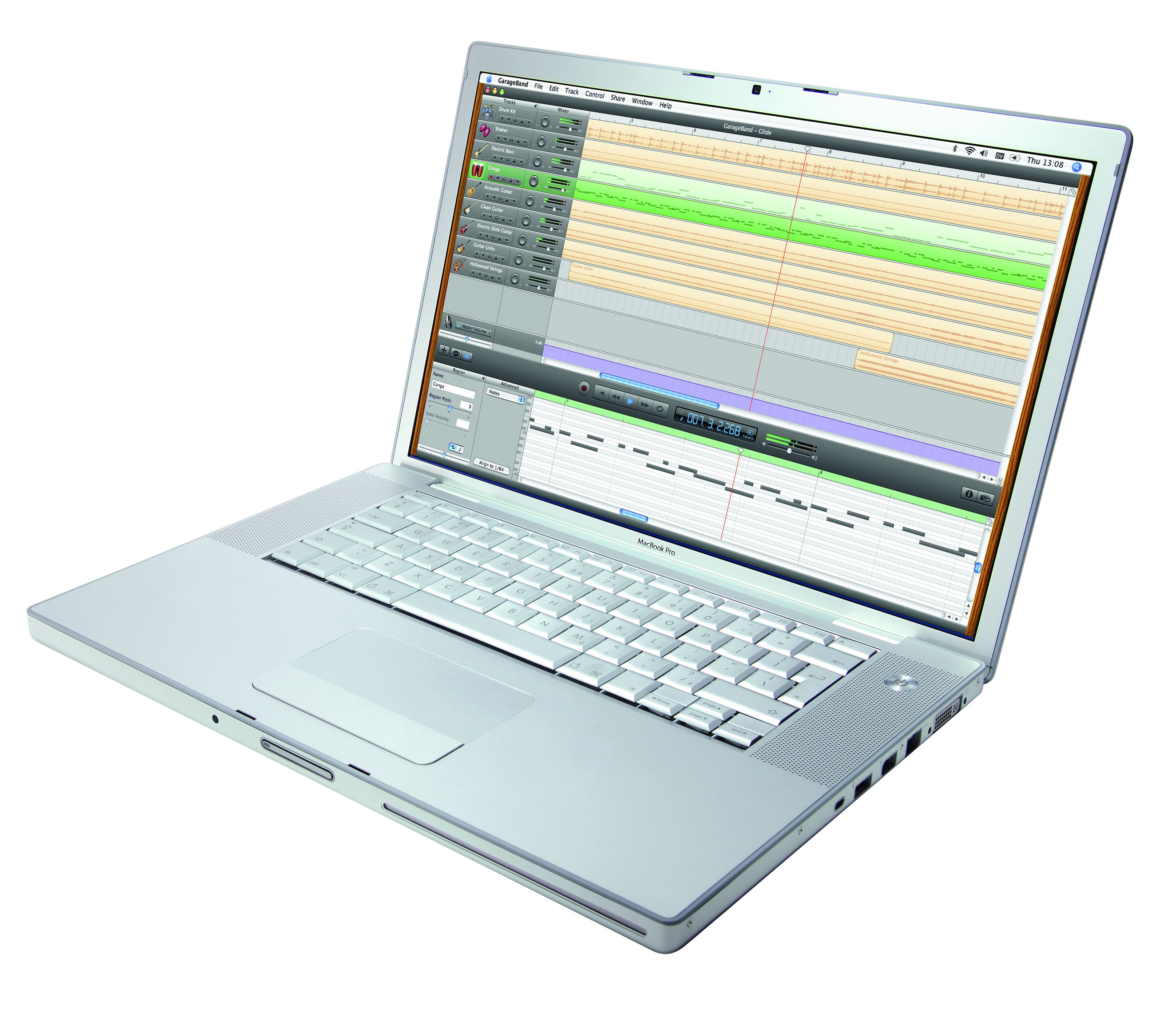MusicRadar Verdict
The ultimate portable music making machine, let down only by the lack of Intel-native software at time of writing, insane heat output, average hard drive performance, lack of dual-layer DVD recording and a rather dodgy name
Pros
- +
Fast, very fast. Bright screen. iLife bundled. Dual-boots Windows.
Cons
- -
Excessive heat output. Mediocre hard disk performance. No dual-layer DVD recording. You'll need native music software to get the best from it.
MusicRadar's got your back

Apple MacBook Pro

Apple MacBook Pro

Apple MacBook Pro

Apple MacBook Pro
Apple has exchanged a few jibes with Intel over the years, so how has the transition panned-out on the Intel-powered machines?
The new MacBook Pro (MBP from here on in) reveals that the move to the Intel platform has been more than worthwhile and is progressing very well indeed.
The physical design of the MBP (we're reviewing the 15-inch model) is very similar to that of its predecessor, the PowerBook G4.
Close inspection reveals a few significant changes, including a discretely built-in iSight camera, a larger trackpad, an IR receiver port and the new MagSafe power connector, which is designed to easily tug away from the computer should the power cable get snagged.
The dimensions of the casing have changed to accommodate the new features, resulting in a bit more width and a little less vertical depth.
The design and build quality are up to Apple's usual high standards, which are rarely equalled in the PC industry.
Just turning on the MBP causes us to smile - it boots in a fraction of the time taken by a G5 PowerMac.
Although Apple's claim of a four-fold increase in speed over the PowerBook is dubious, benchmarks have shown that the dual-core Core Duo chip is a serious ass-kicker.
Beyond sheer speed, the processor has a few new tricks up its sleeve, including real multi-processing, ultra-fast communication between the two cores and hardware support for running more than one OS at the same time.
Hands on
The display runs at a native resolution of 1440x900 and is quite usable outside, even in bright conditions.
The onboard ATI Mobility Radeon X1600 graphics system has 256MB DDR3 RAM and is capable of driving Apple's monstrous 30-inch Cinema Display through its Dual Link DVI output.
By default the 2GHz MBP ships with a 100GB 5400rpm hard disk, but this can be upgraded to a 120GB model or a 100GB 7200rpm model as a build-to-order option - we'd recommend the latter in view of the mediocre disk benchmark results.
The built-in DVD drive can read and write all common types of media, but lacks dual-layer support.
While this is no big deal in the short term (dual layer media is still ludicrously expensive), it's one area in which the MBP is a little less future-proof.
The light-sensitive illuminated keyboard is responsive and good to type with, while the trackpad's two-finger scrolling feature makes it easy to quickly navigate large arrangements in Logic Pro.
As usual, the built-in audio system provides decent output quality and very low latency under CoreAudio, and even includes optical digital I/O.
Just two USB 2.0 ports and one 6-pin FireWire 400 port are provided for peripheral connectivity.
Apple's AirPort Extreme internal wireless network adaptor is fitted as standard and the reception is much improved over previous models. For wired networking, a Gigabit Ethernet port is also built-in.
For expansion, Apple have ditched PCMCIA and gone with the much faster ExpressCard34 slot. Unfortunately there aren't many compatible cards available as yet, so it's unclear whether or not this standard will eventually be widely adopted.
Some hardware companies have announced compatible FireWire 800 and eSATA cards, helping to mitigate concerns over the lack of high-speed external disk connectivity.
Internally, ExpressCard34 provides access to the PCI-Express bus and extra USB 2.0 ports.
As a music production platform, the MBP is incredibly powerful, fast and responsive. The benchmark figures show that it has plenty of raw power on tap and is capable of handling even the most ambitious projects.
Unfortunately, this raw power comes at some cost: battery life is rather limited at around 3.5 hours and certain areas of the casing get ridiculously hot during even moderate use.
Fortunately, the machine remains fairly quiet, but we can't help being concerned that the excessive heat could cause long-term reliability issues.
As for the infamous processor whine that many users have reported, we only noticed it running on battery power, and even then it was so quiet that we had to listen out for it.
Also, enabling Bluetooth seemed to get rid of it completely, so we can't really level any criticism at the MBP in this area.
Compatibility
OS X 10.4 for Intel Macs includes the behind-the-scenes Rosetta translation interface, which enables PowerPC apps to run on Intel processors.
Although a very impressive technology, Rosetta isn't suitable for real-time music applications, so potential buyers should check that their favourite apps and plug-ins have been converted to Universal Binaries.
At the time or writing, Logic Pro 7 and Live 5 have been 'done' (and both run beautifully, particularly the dual-core enabled Logic Pro), with Reason 3 on the way.
While some external USB and FireWire audio interfaces will work straight away with the built-in CoreAudio drivers, others will require updating - again, our advice is to check first.
All of Apple's bundled software is already native, including the iLife bundle, which features the latest GarageBand version.
Logic Pro users who already own PowerPC hardware will be glad to know that Logic Node works just fine on a combination of PowerPC and Intel hardware.
Summary
High-end Apple hardware always comes with a bit of a price premium and this is no exception.
The design, build quality, excellent OS and bundled software more than make up for the extra cost, though.
Did we mention that the MBP can now officially dual-boot Windows, under which it's a potentially stellar performer? Yes indeed, Apple pie never tasted so good.
Computer Music magazine is the world’s best selling publication dedicated solely to making great music with your Mac or PC computer. Each issue it brings its lucky readers the best in cutting-edge tutorials, need-to-know, expert software reviews and even all the tools you actually need to make great music today, courtesy of our legendary CM Plugin Suite.

“Almost a lifetime ago, a few Burnage lads got together and created something special. Something that time can’t out date”: Original Oasis drummer Tony McCarroll pens a wistful message out to his old bandmates

“A high-quality solution for capturing your drums”: Sennheiser MD 421 Kompakt review

“I need to build a sound of my own that has the power that I want”: Floating Points hates festival sound systems so much that he’s invented his own









